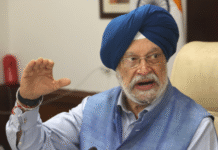New Delhi– Insurance in India has transformed to become a digitally driven buyers’ market from being a sellers’ market, industry chamber CII said on Sunday, citing a report prepared jointly with British professional service firm Ernst and Young (EY).
“Insurance in India has moved from being a sellers’ market to that of a digitally driven buyers’ market,” said the report titled ‘Insurer of the Future’.
“Technology will power the new wave of change for the Indian insurance industry,” the Confederation of Indian Industry said in a statement here.
“The customer is at the centre of digital transformations across the value chain and the report recommends pursuing technology to improve the traditional insurance process and to re-configure the insurance business model,” it said.
Noting that Internet of Things (IoT) can play a crucial role in assessing and pricing the risk of loss, the report said Robotic Process Automation (RPA), that replicates human behaviour and executes non-judgemental sequence of activities, can help insurers to automate client servicing activities.
“Insurers, through collaboration with third party data service providers can make informed strategy and policy related decisions for insurance risk-management and fraud monitoring,” the CII said.
“Insurance bundling on e-commerce platforms has enabled greater customization in product and pricing thereby targeted marketing to customers,” it added.
The industry chamber, however, also noted that insurance in India has been slow as compared to the rest of the financial services “in adopting new technology value propositions available in the market as an enabler of business strategy”.
“The drivers of Insurance business in India are rapidly changing. Over the last decade and a half several innovations have smoothly blended into the ecosystem of insurance, be it in terms of products, distribution, technology or the basic way in which business is done,” the statement said citing Director General CII Chandrajit Banerjee.
“Technology and digitisation disruptions have brought the sector to a point of transformation,” he added.
“With the rising population and changing demographics, insurers and intermediaries will have to constantly innovate to remain relevant,” said Rohan Sachdev Partner, EY.
Commenting on the possible impact of the Goods and Services Tax (GST) in insurance, CII noted that currently, as a service industry, insurance has one single tax (service tax) with one administering authority in the central government.
“Under the dual GST structure, a significant impact on this industry would be the emergence of dual stakeholders in every taxable supply of service: the government of the state where the supply is made and the central government,” it said.
“From dealing with a central service tax for pan-India operations, insurers will potentially start dealing with 38 taxes: 35 State GSTs (SGSTs) of the states and union territories, 1 Central GST (CGST) and IGST on inter-state supplies,” it added. (IANS)







